Whether or not you’re aware of it, you’ve probably heard Björgvin Halldórsson’s voice a couple of times today if you’re in Iceland. You might even be listening to him as you read this. In the decades’ worth of music that he’s released to critical acclaim, he is still most prevalent on the radio this time of year. So much so that he must be considered the father of Christmas pop music in Iceland.
But he is so much more than just the father of Christmas pop music. He’s a phenomenon. His contemporaries know the 62-year-old singer from Hafnarfjörður as Iceland’s first pop star. Never before had the nation idolized somebody like it did Björgvin in the late ‘60s and early ‘70s. There were even persistent rumours that Björgvin-crazed teenagers attempted to knock out one of their front teeth to look like their idol, who had chipped his tooth in a swimming pool accident in his teens.
“I couldn’t get it fixed straight away. The knock was so severe that it cracked the bone that holds the tooth,” Björgvin says when I enquire about the validity of this story. “I obviously hated having a broken tooth, but learnt to live with it when I saw Paul McCartney sporting a chipped tooth in the music video to “Hello Goodbye.” Stories about those kids trying to knock their teeth out circulated fairly early on, but I never really got any conclusive proof. Maybe it’s just an urban myth, but isn’t there always a touch of truth in those?”
For those born to the generation who were allegedly going for the chipped-tooth look in their youth, Björgvin’s voice has been an inherent part of growing up. He sent us to sleep with his children’s records, he was the voice of Stöð 2—Iceland’s “other” TV station in the ‘90s—and the rest of his music was everywhere.
Björgvin is the perpetual patriarch of pop music. Björgvin is our Elvis. He’s our Sinatra. He is our Legend.
Chipped Teeth And Popphátíð
To wit, Björgvin’s Facebook page is actually called “Björgvin Halldórsson (Bo Hall) Icelandic Music Legend.” As I hesitantly enter his studio, which is above a shipping company in an industrial part of his hometown, I can’t help but feel the title is fitting. His beautiful high-end recording studio is stacked with racks of vintage guitars in their dozens and microphones that would make any audio geek weak in the knees. It also functions as a small museum, homage to his career and accomplishment. The walls are covered floor to ceiling in gold records and various awards, countless memorabilia and pictures from his illustrious and colourful career, intermixed with massive posters featuring Dylan, The Beatles, The Stones and other greats. These are clearly the stomping grounds of a legendary pop star.
It doesn’t actually require any subjective observation to maintain that he was Iceland’s first pop star, as he was actually crowned “Pop Star” at Popphátíð, a battle of the bands contest, in 1969. To a packed audience of 4,000 people in Laugardalshöll, his band Ævintýri beat stiff competition from the likes of Trúbrot and walked away with the prize.
“We became famous overnight and for the next couple of years and we experienced something like Beatlemania. We were once chased out of the youth centre Tónabær and had a crowd run after us down to Miklatún, where we climbed the statue of Einar Ben and performed a few songs,” Björgvin recalls.
“I never really intended to become a musician but after the whole Ævintýri era I’ve never really looked back. I had sort of reached a point of no return.”
A point of no return indeed. In addition to fronting Ævintýri, Björgvin released his first solo record in 1969, singing a version of “Walk Away Renee,” which had previously been recorded by Left Banke and Four Tops respectively. Legendary filmmaker Hrafn Gunnlaugsson wrote the Icelandic lyrics to the song, called “Þó líði ár og öld,” and to this day remains one of the most beloved songs in Icelandic history.
From there he went on to play in a series of bands: Brimkló, Change, HLH Flokkurinn, Ðe Lónlí Blú Blú Boys, Hljómar and more.
“Being in a band was always the most fun,” he says, “but I realised pretty early on that bands are too volatile. There’s always somebody just about to walk out. So I couldn’t just rely on always being in a band. I needed to do something on my own. I guess I’m just built that way, I need to be in control of my own destiny.”
That need to control his destiny would lead to a steady stream of top selling solo records and various other projects. Björgvin’s solo career coupled with his production duties on records for fellow pop stars, opera singers and symphony orchestras, makes him verifiably one of Iceland’s most productive musicians to date.
The Modern Archivist
As he’s showing me around the studio, we stop by a wall in the far corner that is plastered with photos from various points in his career. Talking me through pictures of him performing with everyone from Tommy Dorsey Orchestra to Rod Stewart makes him infectiously nostalgic.
“I was singing some Rod Stewart songs at Broadway [a nightclub Björgvin used to manage events for] and what do you know, the man himself just showed up and started singing along. After one song, he turned to me and said the tunes were too high pitched for him. He needed them in a lower key. But I just told him they were all in their original keys. If I can sing it, you can too.”
With so many equally compelling stories to tell, he was hard-pressed to name a favourite gig or proudest moment.
“You’re only ever as good as your last gig,” he says. “I have all this stuff because I see myself as a bit of an archivist. Throughout the years I’ve amassed newspaper clippings and pictures of my peers and me. I’ve got folders of stuff relating to various years, you know, the folder called ‘Pop in Iceland 1970’ will have pictures and articles relating to everything between Ævintýri and Led Zeppelin. Somebody needs to collect all this.
Considering that Björgvin’s career has spanned four decades, we’re undoubtedly talking about enough material to fill an entire museum and Björgvin is far from done. On his new album, ‘Duet 3’—the third in a series of record of duets—he’s joined by representatives of the younger generation of Icelandic musicians, such as Lay Low and Arnór Dan Arnarson from Agent Fresco, and even though he’s 33 years my senior his bright orange trousers and his thick-rim hipster glasses make him look considerably more “current” than I do.
“I feel like I am obliged to stay in touch with what’s going on at any given point. To this end I listen to almost everything that is released in this country.”
To stress his point he picks up a few CDs from the piles scattered around his desk and shows me Jón Jónsson, Kaffibrúsakallarnir, Mammút and more.
“If I didn´t listen to this stuff I´d be lost in the woods,” he says. “But sometimes I feel like I’ve travelled back in time. Everybody is letting their hair grow out, has a guitar around their neck and is rocking out again. It’s ‘back to the future stuff,’ which just goes to show that music is cyclical. Musical styles come back in a slightly different guise, but the foundations are always the same.”
His interest in staying in touch with the musical landscape is undoubtedly to some extent fuelled by his children’s successes. His daughter Svala fronts electro outfit Steed Lord and his son Krummi is the singer in legendary noisecore band Mínus as well industrial electro band Legend. Still, his need to be current actually predates his children’s emergence on the local scene. This is most notable on his Duet records and a series of Christmas records he’s called ‘Jólagestir’ (“Christmas guests”), featuring a who’s who in Icelandic music at the time of their recording.
“I love getting an idea and orchestrating it much like a film director casts the right people for the right role” he says. “That’s just what I did on my recent record ‘Duet 3.’”
“I’m lucky enough to have all this amazing and varied talent wanting to join me. Having such a wide variety of musicians to collaborate with leaves me with the fun job of finding the suitable jackets and so on. I’m standing on the shoulders of giants.”
He’s perhaps never been as in tune with the times as when he recorded a duet with Mugison in 2005. It was Bob Dylan’s song “Make You Feel My Love,” which with Icelandic lyrics was called “Minning.”
“And then Adele sang it a couple of years later and became an international superstar. It just goes to show that we seem to have a pretty good nose for these things,” he says, gesturing to a massive print of early ‘70s era Bob Dylan. “And we’ve obviously got a picture of the master here.”
The Master Of Imitation
There is a very rich tradition of foreign songs being reinterpreted into Icelandic, a tradition that dates back to the birth of Icelandic pop music. And despite having written a plethora of songs, Björgvin’s most famous ones tend to be these types of pop music imports, such as aforementioned “Walk Away Renee” and “Make You Feel My Love.”
“I think this tradition of ‘Icelandifying’ international pop songs has left a big mark on the Icelandic music landscape,” he says in a contemplative tone. “No artist ever appears fully formed. Their inspiration always comes from what precedes them and seeing as we’ve had all these songs so deeply rooted in our culture, they’re inevitably going to affect the music that follows.”
Björgvin is most well-known as a singer and interpreter of both international and Icelandic ballads and classic pop songs, but throughout his career, he’s dabbled in every conceivable genre from country, heavy rock and gospel to ‘50s rockabilly, opera, and Christmas songs.
“I’m always trying to reinvent myself,” he explains. “You see, Iceland is a small market, and you can’t keep selling the same cookies. Besides, I am a complete omnivore when it comes to music and I like trying out different things.”
This chameleon-like quality of his reached its full potential when Björgvin took the job of music supervisor for Friðrik Þór’s film ‘Djöflaeyjan’ (“Devil’s Island”), a period film set after the Second World War when rock ‘n’ roll swept through the country like a storm.
“Friðrik asked me to be the music supervisor because this was the sort of music I had grown up on,” he says. “Growing up in Hafnarfjörður in the ‘50s and ‘60s meant that we could receive the radio broadcast from the nearby army base, so it was all American rock ‘n’ roll in my youth: Little Richard, Jerry Lee Lewis, Elvis and the lot. I’d told Friðrik that we needed all the original rock ‘n’ roll hits to make this work, but I quickly realised that was never going to work as the licenses were extortionate.”
He therefore set out to painstakingly re-recording “Hound Dog,” “Great Balls of Fire” and more ‘50s rock ‘n’ roll classics with such precision that it took people a while to realise these weren’t the original recordings.
“Know how we did this?” Björgvin interjects when he grows tired of my gushing about the quality of those recordings. “I got guitarist Villi Guðjóns, who’s an absolute parrot and a genius, and other musicians of same calibre and we dug out all the old amps, the guitars, the mics and so on, and just meticulously copied every sound on those records to as much detail as we could.”
The King Of Christmas Pop
It’s around this time of year when Björgvin’s skill for mimicry and his way with production is easiest to observe. If he wasn’t singing the Christmas songs you’ve heard, he probably produced them.
“It started when I sang on a Christmas record with Hljómar in 1975. We all felt like Iceland needed some pop Christmas songs because all we had at the time were the classic children’s rhymes and folk songs,” he says.
Twelve years later, he released his first ‘Jólagestir’ record and since then the series, which counts four albums, has become the staple of Icelandic Christmas music. But what many don’t know is that some of our favourite songs on those records actually started their lives as Italian love songs.
“I love travelling and when I do I try to leave the sheep’s head and the mashed turnips at home. I eat where the locals eat, I do what the locals do. ‘When in Rome,’ as it were. So, when I went to Italy for the first time in the ‘80s, I fell completely in love with the place and savoured the opportunity to take in all their culture. This love of mine for everything Italian eventually came to include Italian music,” he says.
“It was when I was listening to those Italian pop songs on our holidays and watching Sanremo [an Italian song competition] that I started to notice a certain dramatic character in them that reminded me of Christmas music. My daughter Svala and I talked about this and felt that all these songs needed were some Christmas bells and new lyrics and they’d suit perfectly as Christmas songs.”
“It wasn’t until sometime later that I started thinking, ‘Why Italian?’ And then it dawned on me: My predecessors, such as Svavar Gests, Óli Gaukur and Ellý Vilhjálms, all sang Italian songs. “Bjössi á Mjólkurbílnum”? “Poppa Piccolino”! It’s a sound we’ve grown up with. Besides, the Italian language lends itself so neatly to being copied in Icelandic. They’ve got the long rhythmic syllables that Icelandic has.”
It certainly worked, as most of the Italian songs have outlived the Icelandic songs that featured on the same albums.
“Their influence on the culture is most obvious when various ad agencies start calling me and asking me for the rights to use some of them and I obviously have no idea. No point asking me, you’ll need to chase down the original rights holders to find out. All these songs are now deeply engrained into Icelandic Christmas culture but ad agencies wouldn’t be interested in them if it wasn’t for their lyrics and the completely new meaning we’ve given them,” Björgvin says.
What’s even more striking about these songs is the way they’re produced. When I started comparing the originals to their Icelandic siblings, I found most of them to be pretty much identical to the originals. The arrangements and instrumentation are almost exactly the same across the board.
“If it ain’t broken don’t fix it,” he says. “We set out to stick to what had caught our attention about the songs in the first place. We’d try to put a little bit of ourselves into them by using updated synth sounds and so on, but didn’t want to mess too much with their form. You wouldn’t just decide to play “Brown Sugar” in minor would you?”
The Legendary Pop Star
Before leaving the studio after an inspiring hour-and-a-half with Iceland’s legendary first pop star, Björgvin decides to show me a portion of his massive guitar collection. Countless Telecasters, Gibsons and lap-steels remind me that when he showed me around earlier I had inquired about career highlights, but had forgotten to ask about any low points. So I squeeze the question in after a long conversation about hollow body guitars and sustain.
“Well, I’m not sure it could be called a personal problem really,” he says in a slightly sombre tone, “but I’ve sometimes felt that there is a complete lack of respect towards those of us who have been doing this for such a long time. I’m old school, and I have so much respect for all my elders. They’ve been around for longer and they know things better than I do. When I was starting out in music, I had so much respect for the guys who were there before us.”
The fact that bands such as Utangarðsmenn (fronted by another musical legend Bubbi) laid into him in their single “Ha Ha Ha” (Rækjureggae) in 1980, just solidifies his status as a musical legend. After all, they considered him a relevant pop culture reference 33 years ago. Either way, I pointed out that I’m not sure this applies anymore as is evident by the stellar cast of youthful talent he’s had working with him on recent records. “Well, yeah, this might be changing,” he says. “I’m certainly flattered that a magazine like The Reykjavík Grapevine wants to talk to me.”
Well, it’s about time we did.
—
1967
Björgvin joins his first band.

1969
Voted Iceland’s ‘popstar’ at the Popphátið competition.
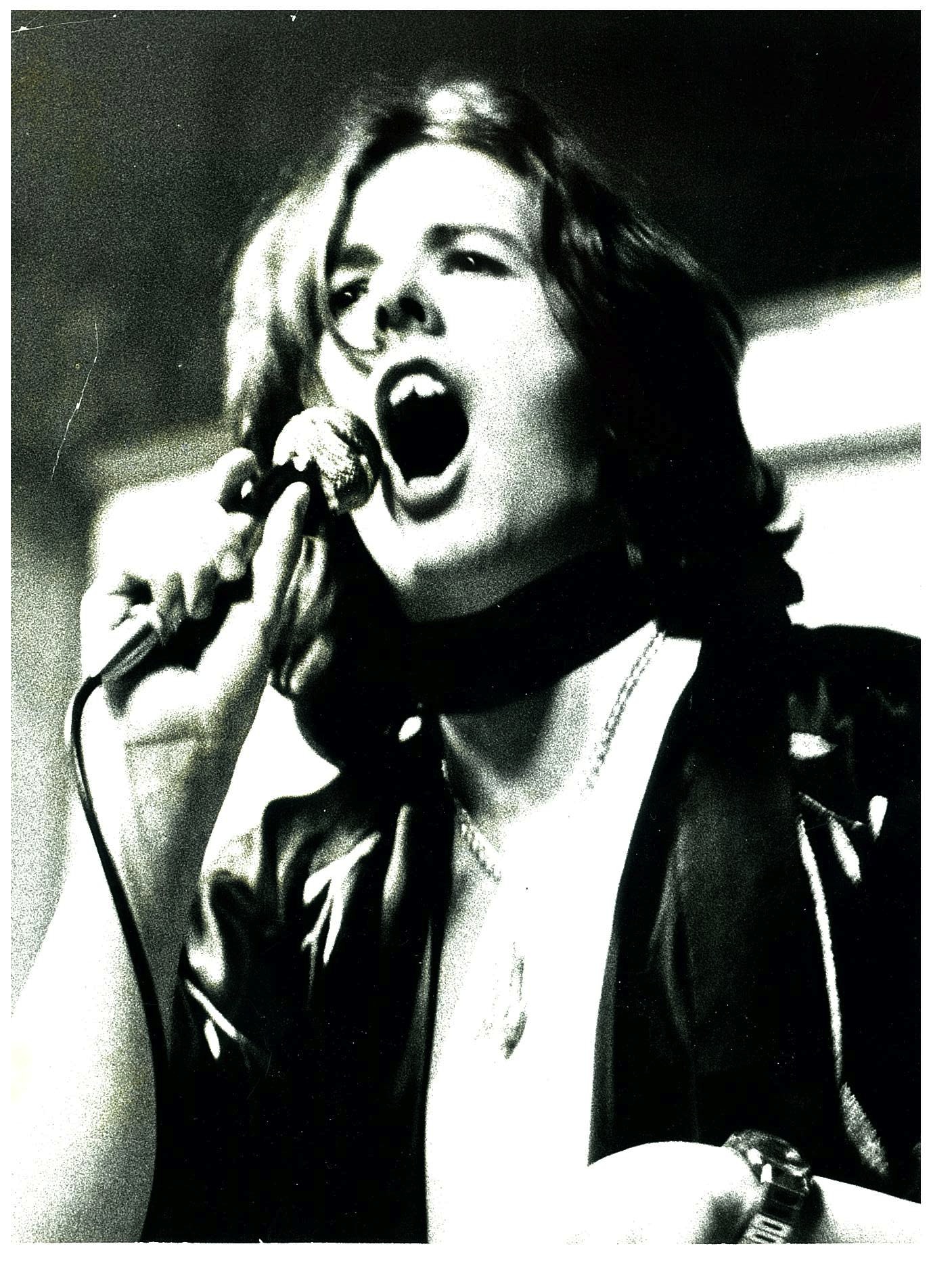
1970
Joins the Icelandic band Changes, which signs with EMI in London.
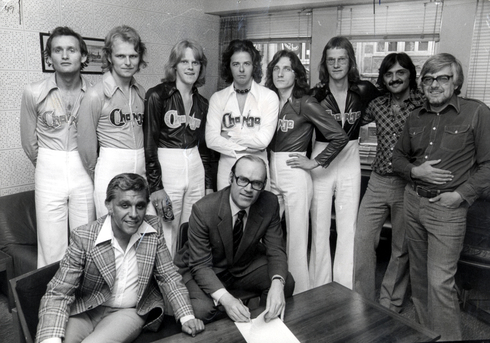
1977
Rejoins Brimkló, which goes on to release five best-selling albums over the next few years.
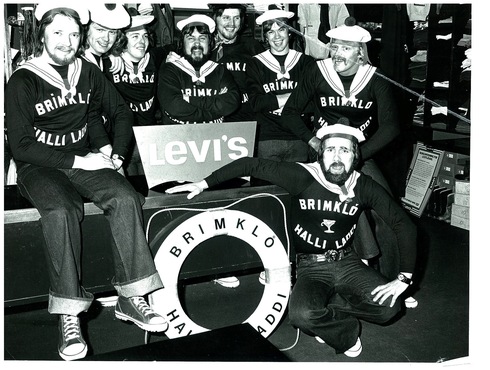
1979
Joins comedy duo Halli and Laddi to form American Graffiti-inspired ’50s rock band HLH Flokkurinn.

1987
Releases first ‘Jólagestir’ (“Christmas guests”) album. There are now four.

1993
Releases gospel album called ‘Kom Heim,’ featuring the song “Gullvagninn,” which is one of his most popular songs to date.
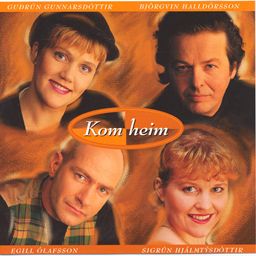
1995
Represents Iceland at the Eurovision Song Contest and places 15th.
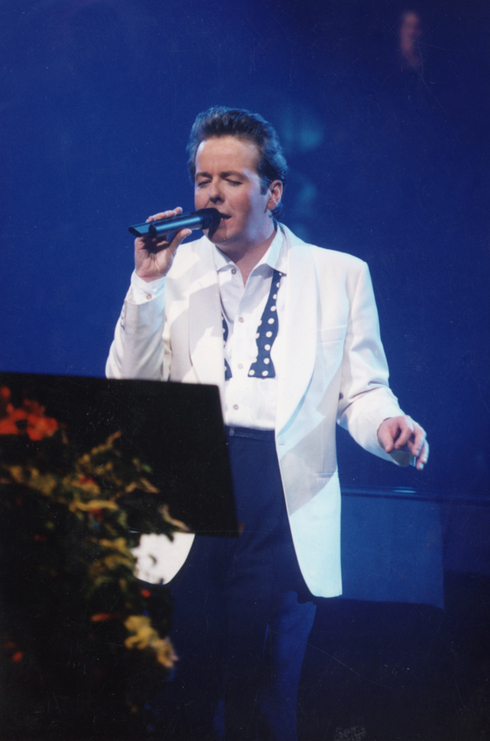
2008
His Jólagestir (“Christmas guests”) concept becomes an annual live gig.
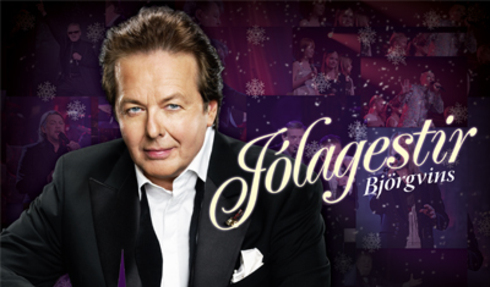
2013
Releases his third album in the Duet series.
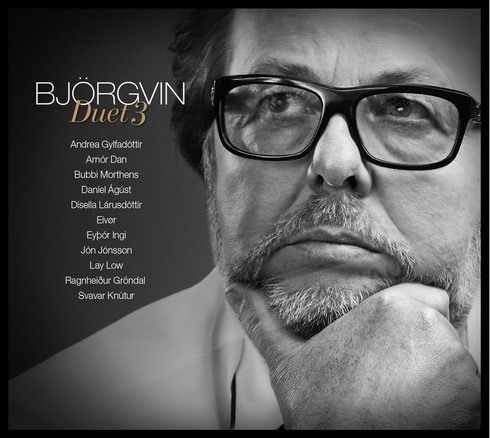
Buy subscriptions, t-shirts and more from our shop right here!















